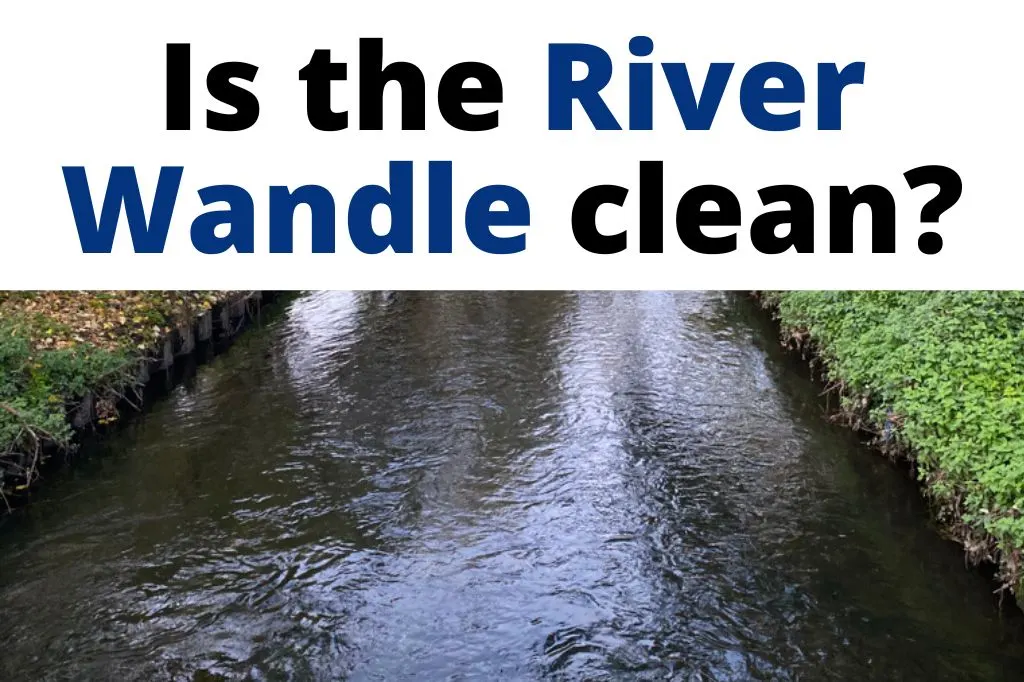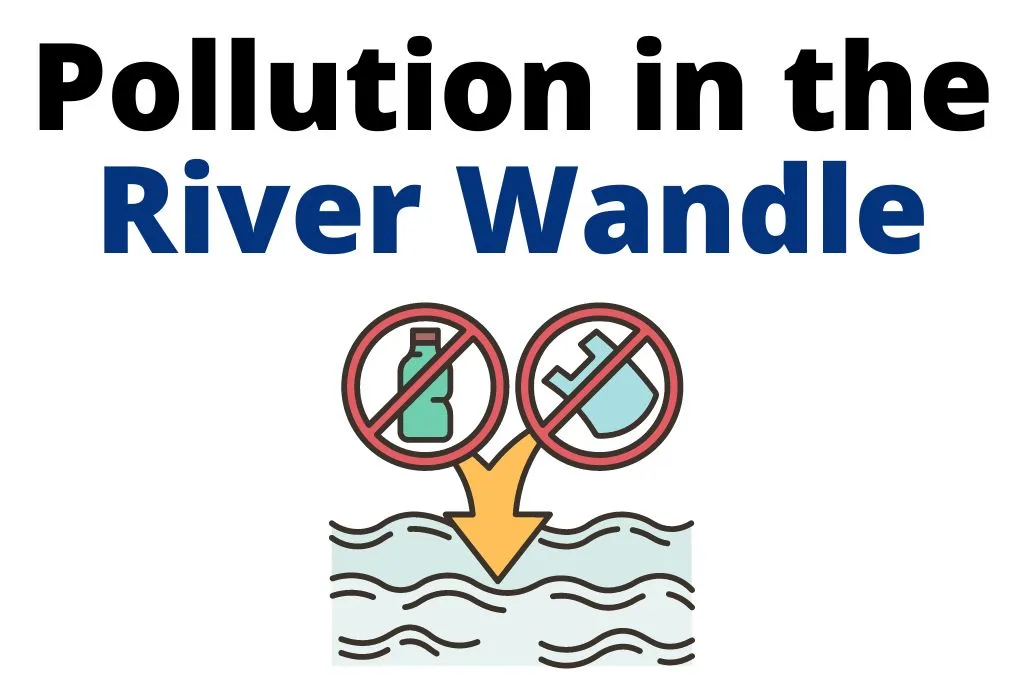Is the River Wandle clean? The River Wandle is much cleaner today compared to how it was fifty years ago. Today the quality of the water is good enough to support a variety of fish and plants.
Despite this however, fly tipping continues to be a big problem along the Wandle Trail, and rubbish dumped in the river can leave the water polluted.
This post is about the history of pollution in the river Wandle, and how clean the river is today.

Is the River Wandle Clean?
The River Wandle is a Chalk River. Chalk rivers have a reputation for their pure, clean water. They are also an ideal habitat for a variety of different fish and plants.
It was because the water from the Wandle was so clear however, that over the centuries many mills set up along its banks. Over time this led to the River Wandle becoming severely polluted.
Today considerable effort has been made to clean up the River Wandle and re-instate the wildlife that once lived there. There are also regular community clean ups to remove any rubbish dumped in the river.

What is Special About Chalk Rivers?
Chalk rivers emerge from chalk aquifers, and have low concentrations of phosphate and nitrate. This means algae is less likely to grow in the water, and the water is usually very clear.
Chalk rivers provide good quality water for a variety of aquatic plants, and fish including trout and salmon.

When did the Wandle River Become Polluted?
The River Wandle became severely polluted during the 17th, 18th and 19th centuries due to the number of mills that existed along its banks. By the mid 19th century it was one of the hardest working rivers in the world, with more than 90 mills on its banks.
Since the River Wandle was a chalk stream with pure water, it was ideal for the bleaching industry to wash chemicals out at the last stage in the whitening process. Brewing and dye mills also depended on the pure water from the Wandle.
Chemicals from the mills were regularly dumped into the water, and as the population grew in Croydon, sewage also started being emptied into the river. At this time there was no regulation of water pollution. By the 19th century parts of the river in Croydon had become an open sewer.
Other industries that made fabric, snuff, iron and cotton poured pollutants back into the river. Soon all the wildlife that had existed in the river was dead.
Water Pollution in Victorian Croydon
By 1848 Croydon still had no sewerage, or piped water supply. The tributary streams of the River Wandle had hundreds of privies, and the two large ponds in Croydon (Laud’s and Scarbrook) became cesspools.
In 1860 Beddington Sewage Farm was constructed on a piece of land that had once been the northern part of the Carew family’s Beddington deer park. This was after complaints from mill owners, and the high level of mortality in Croydon.
Water Quality in the 1950s and 1960s
The quality of the water in the River Wandle is thought to have been at its worst in the 1950s and 60s. The water was still contaminated with dye and parts of it would foam at the river banks.
In 1969 a discharge of sludge was released into the river from Beddington Sewage works. This was when the pollution in the river was at its worst.
Water Quality Over the past 50 years
Over the past 50 years the mills and factories along the river have all closed, and the quality of the water has slowly improved. The problem of foaming water disappeared as manufacturers began using detergents that could be broken down in the sewage works.
Apart from some accidental discharges into the river, the quality of the water has been getting better over the years. The chemicals and pollutants in the water are monitored every year by the Department for Environment Food & Rural Affairs.
Useful Links
Is the River Wandle Clean?
Thanks for reading my post about whether the river Wandle is clean. Please feel free to leave me a comment below.

John Jackson
Friday 16th of August 2024
Water recycled up from Goat Green after processing at Beddington then returned by pipe to Carshalton ponds. MHP safe for paddling